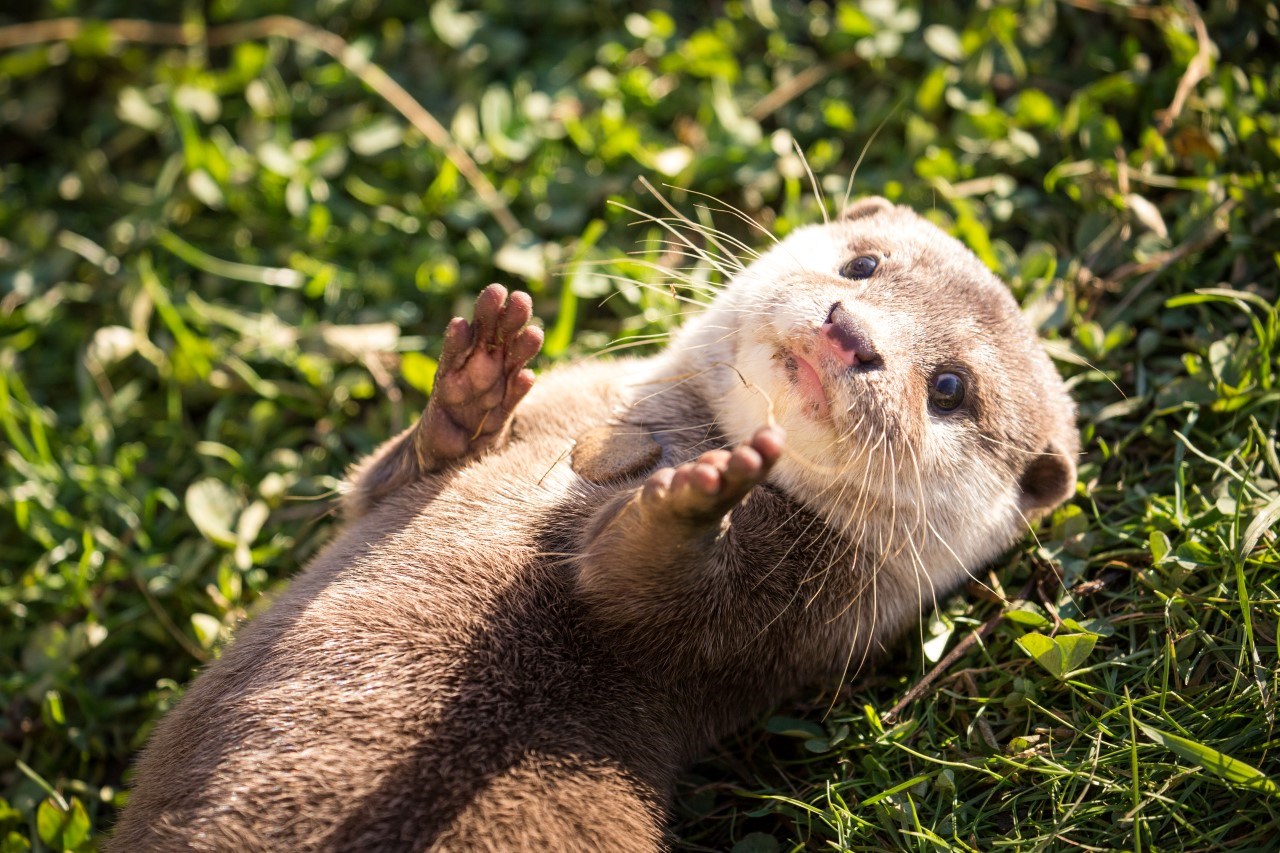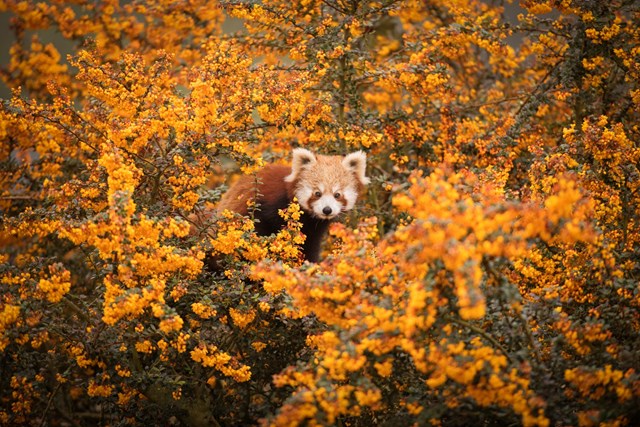Overview
The Asian short-clawed otter is the smallest of all the otter species.
There is a small family of Asian short-clawed otters living at Woburn Safari Park; you’ll find them in the animal encounters section of the Foot Safari, often playing and foraging in the waterfall which runs through their enclosure.

All about us
| Distribution: | India, Asia, Philippines, Taiwan, China |
|---|---|
| Habitat: | Rivers, creeks, wetlands, mangroves and rice fields |
| Height: | 70-96cm including the tail |
| Weight: | 1-5kg |
| Gestation Period: | 112 days |
| Lifespan: | Wild: 8-10 years; captivity 20 years |
| Threats: | Habitat loss, fur trade, traditional medicine trade and pollution. |
About us
Scientific name: Aonyx cinereus
The Asian short clawed otter gets its name from the very small claws on its fingers, they rely on their sensitive and dexterous fingers to forage for their prey, and so do not have the long claws which most otters have. As a result of this they also have less webbing between their digits than other otters.

Asian short clawed otter facts
- Physical features
- Diet
- Social structure and communication
- Husbandry and enrichment
- Threats and conservation
They are as at home on land as in the water, being amphibious they spend roughly half of their time on land, and half in the water.
When swimming the otters rear feet propel them through the water and their tail acts as a rudder for steering. Their body is built to allow them to slip through the water with little resistance. Their tapered snout, long slim body and tail allow them to be perfectly streamlined, as well as a coating of oil from glands throughout its skin.
Their digits only have small claws, unlike other otter species which have larger claws, they also have less webbing then other otter species. This is due to the way they hunt; they use the sensitive tips of their fingers to search through mud, water, and under rocks to find their food.
As well as their paws used for hunting and foraging they have sensitive whiskers, or vibrissae, which help locate their prey in murky water. They do also have fantastic vision both above and below the water.
They have two layers of dense fur and a layer of body fat to keep them warm in the water. Their coat is usually a pale brown colour, with cream underbelly and chin.
The diet of the Asian short-clawed otter consists mostly of crabs, other crustaceans, molluscs and some fish, although they will occasionally eat frogs, small mammals, snakes and insects. They use their sensitive paws to search under rocks and mud to find their prey and prefer to hunt in shallow water. With their large back teeth, the Asian short-clawed otter can crush the shells of crabs and molluscs easily but they have also been known to leave these crabs and molluscs out in the sun to crack their shells for them.
To keep their body at a constant temperature, otters maintain their metabolism by eating the equivalent of 25 per cent of their body weight every day.
They are seen as a valuable form of pest control for rice farmers as they eat the crayfish and crabs which damage their crops. They have also been utilised by fishermen and trained to herd fish towards their nets in return for food. However they are seen as a pest by prawn farmers as they will regularly raid their farms and eat their stocks.
Asian short clawed otters are very sociable animals, usually forming groups of 10 to 12 individuals in a loose family group. This group will contain one monogamous adult breeding pair, who will both help to raise their young. The pair will have two litters a year, of up to seven young, but usually just one or two.
The female will build a nest made of grass around two weeks before birth, where her cubs are born after a gestation of 60 to 64 days. The young otters don’t open their eyes until they are around 40 days old, and it will take seven to nine weeks before they take their first swim and eat solid food.
Communication is important; they are very vocal with 12 distinct calls used to communicate with the group. They use a series of yips, barks, whistles and chattering noises including greeting, mating, and alarm calls.
Scent marking also plays an important role, scent glands at the base of the tail are used to mark territories, as are urine and droppings (known as spraints).
This species of otter naturally use their hands to forage for food in the water or foliage so providing an opportunity for this natural behaviour is important. Their food is often put in the water for them to find, or spread around their enclosure and hidden for them to search for.
Asian short clawed otters are amphibious, spending as much time on land as in water, if not more. They are usually found in, and around, rivers, estuaries, hill streams, marshes, coastal wetlands , mangroves and rice fields, so their enclosure has a mixture or terrain and planting for them to utilise.
Although they are mostly a tropical species they are very hardy and can survive in low temperatures, and can be found up to 2000 feet above sea level, but to keep them at a regulated temperature overnight their nest box is kept at around 10°C.
They are a diurnal species, meaning they are active during the day time, so they are most lively when visitors can see them.
Destruction of habitat is the biggest threat faced by Asian short clawed otters. Deforestation throughout Asia is resulting in the loss of hill streams. Swamps and mangroves are being drained and converted for agriculture and aquaculture. Aquaculture in the form of fish and prawn farming are a major problem, with Otters moving closer to human activity and farms, they are often seen as a pest and killed. The development of intensive agriculture, including tea and coffee plantations not only destroy their habitat but also result in surrounding streams and rivers being polluted by pesticides, damaging the abundance of prey. There has also been a reduction in their prey as a result of overexploitation by humans. Scientists consider them an indicator species, as their population indicates the general health of their habitat and the health of other species in their habitat.
They are also hunted for their pelts and organs, which are used in traditional medicines. They are listed as appendix II of CITES, which means the trade and export of this species is heavily regulated and controlled to protect them.
In some ranges of their habitat Asian short clawed otters are protected, for example Malaysia and Singapore, but not in all countries of their distribution.
One of the key organisations involved in the conservation of the Asian short clawed otter is the IUCN Otter Specialist Group, which has developed a network of biologists across Asia that are conducting field surveys and popularising this species’ conservation. Nevertheless local habitat protection and conservation is required if the long-term survival of the Asian short-clawed otter is to be assured.
Many zoos in the world keep this species, creating the opportunity for scientists to gain further knowledge about them which can then be used to assist their conservation in the wild.

